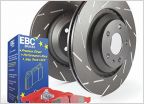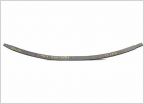-
Welcome to Tacoma World!
You are currently viewing as a guest! To get full-access, you need to register for a FREE account.
As a registered member, you’ll be able to:- Participate in all Tacoma discussion topics
- Communicate privately with other Tacoma owners from around the world
- Post your own photos in our Members Gallery
- Access all special features of the site
Shackles: A Study in Leaf Spring Setup
Discussion in 'Suspension' started by vanillion, Jan 11, 2023.


 Icon Vehicle Dynamics 2.5" Coilover Rebuild
Icon Vehicle Dynamics 2.5" Coilover Rebuild 1st Gen Shock Problem
1st Gen Shock Problem Painting the knuckle?
Painting the knuckle? Replacing Control Arms & Brakes @ 161K, what else should I do while it's torn apart?
Replacing Control Arms & Brakes @ 161K, what else should I do while it's torn apart? Body lift
Body lift Extra Weight in bed - Need Suspension Advice
Extra Weight in bed - Need Suspension Advice
































































